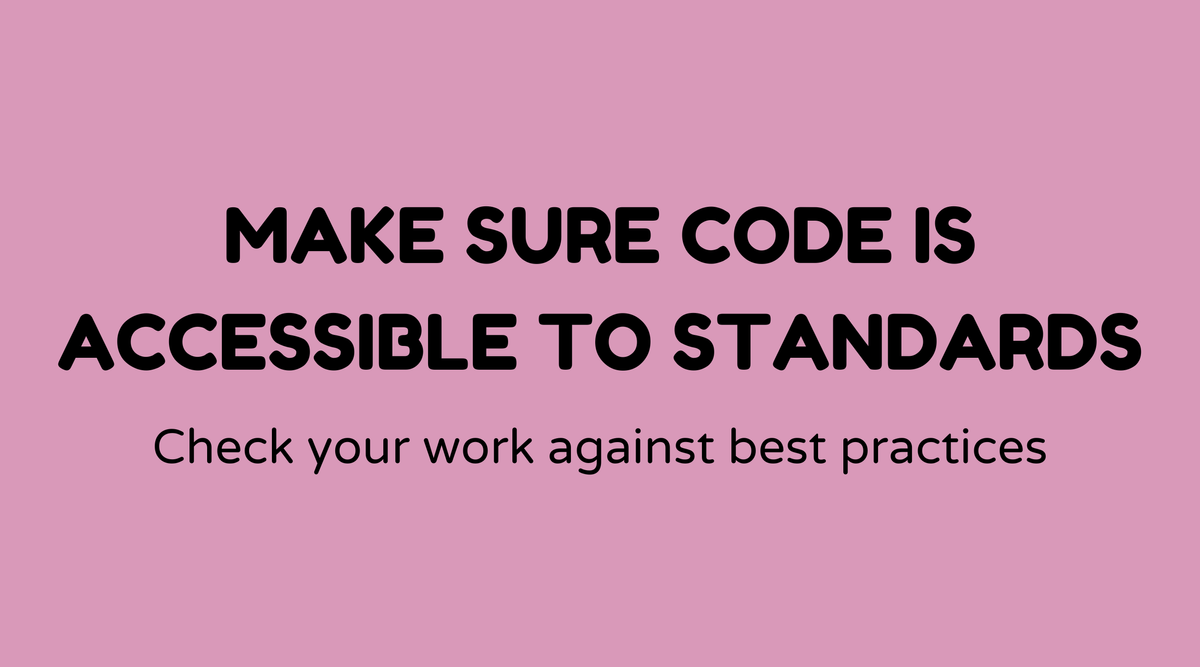Make sure code is accessible to standards

Overview of Code Standards for Accessibility
When discussing code accessibility, it's vital to consider not only the developers but also the end users who utilize assistive technologies. Accessibility ensures that everyone can effectively interact with web content, regardless of their abilities or disabilities.
Importance of Accessible Code
In the current digital environment, coding with accessibility in mind is crucial. Creating inclusive digital experiences broadens your audience and enhances overall usability. Beyond improving user satisfaction, it also supports compliance with legal standards such as the Americans with Disabilities Act (ADA) and the Web Content Accessibility Guidelines (WCAG).
Understanding Accessible Code
Accessible code consists of practices that allow individuals with disabilities to easily use technology. This includes structuring HTML for screen reader compatibility, offering text descriptions for non-text content, and allowing navigation via keyboard controls. The goal is to optimize the experience for all users.
How to create Accessible Code
Here are steps to ensure your code adheres to accessibility guidelines:
-
Semantic HTML: Employ appropriate HTML tags like
<header>,<main>, and<footer>to structure content, enhancing readability for screen readers. -
ARIA Attributes: Use Accessible Rich Internet Applications (ARIA) attributes to supply accessibility information when basic HTML isn't adequate.
-
Text Alternatives: Include descriptive text for images, graphs, and other non-text elements to convey their meaning.
-
Keyboard Navigation: Ensure that all functionalities are reachable through keyboard controls, paying attention to
taborder and element focus. -
Responsive Design: Create designs that adjust to different screen sizes and orientations, improving usability for various devices.
-
Color Contrast: Ensure text and interactive elements have sufficient contrast against the background, promoting readability for users with visual impairments.
-
Testing with Assistive Technologies: Regularly evaluate your site using screen readers like JAWS or NVDA to confirm that it remains functional and accessible.
Examples of Accessible Coding Practices
Here are examples of practices that promote accessibility in code:
-
Forms: Use label elements for each form control and connect error messages programmatically to the appropriate fields.
-
Tables: Utilize
<th>for headers and<caption>for tables to describe the data contained. -
Headings: Organize content using a clear hierarchy of headings (H1, H2, H3) for effective page organization.
FAQs
How can I verify my code's accessibility?
- Tools like WAVE, Lighthouse, or browser extensions can help audit your code for adherence to accessibility standards.
What are ARIA roles and how are they applied?
- ARIA roles specify the function of an element within the user interface, such as
role="button", assisting screen readers in understanding its purpose.
Why is keyboard navigation vital for accessibility?
- Many users are unable to use a mouse. Keyboard navigation allows those with motor disabilities to access all interactive features.
What role does color contrast play in web design?
- High contrast improves readability for visually impaired users and those in low-light settings, thus enhancing overall accessibility.
Can accessible code boost SEO?
- Accessible coding often improves SEO, as search engines utilize principles similar to accessibility standards for indexing content, such as alternative text for images and well-structured HTML.
Where can I find additional resources on coding standards for accessibility?
- Websites like the W3C Web Accessibility Initiative and YouTube channels focusing on web development topics are excellent starting points.
Creating accessible code reflects empathy and inclusivity. It encourages user engagement and expands your audience, ultimately benefiting both users and developers. For further insights, consider exploring resources from organizations like The Paciello Group and David Berman’s YouTube channel on web accessibility awareness.



